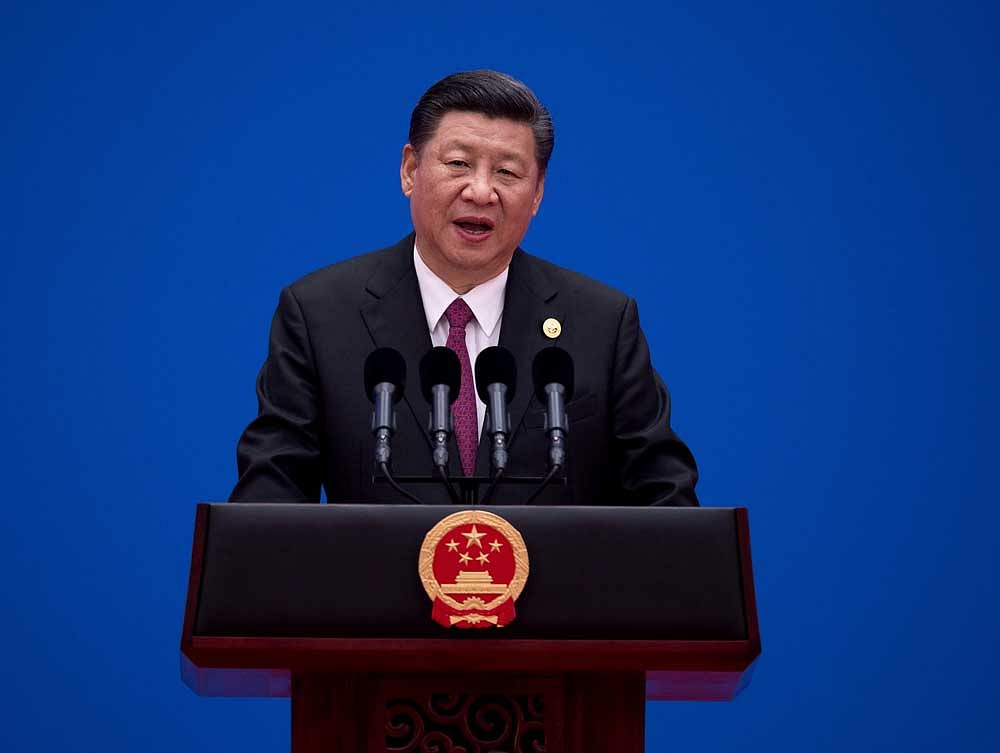
China’s defence white paper 2019 reiterates the importance of Xinjiang, Tibet and Taiwan for China. The white paper highlights China’s concerns on Taiwan. But it implies a certain lessening of its worries on Xinjiang and Tibet compared to the past.
China has always addressed the instability in these regions as its internal security issues. It has repeatedly warned of the interference of external separatist forces that are operating in these regions. The 2019 white papers hints that China has managed to achieve political and social stability in Xinjiang and Tibet.
Stabilising and securitising
Xinjiang or Xinjiang Uygur Autonomous Region (XUAR) is the largest provincial-level division of China. It is also one of the least developed provinces of China. The province has been at the crossroads of tension between the Han-Uyghur ethnicity and the Chinese state. This has resulted in rising incidents of terrorism, separatism and demands for political and religious autonomy. However, in the past few years, the Chinese state has managed to control the rising “instability in this region.”
The recently published research paper in the China Quarterly by Adrian Zenz and James Leibold argues that the presence of People’s Armed Police (PAP) in this region has increased 13 fold since 2014. These recruitments are of the third level officers, i.e. informal Assistant Police Staff (xiejing or fujing). These officers have the power to detain, but not to arrest. Simultaneously, China since 2014 has detained hundreds of thousands of Uyghur Muslims in XUAR and have put them in the “re-education” camps. China views these camps as vocational training centres to stamp out religious extremism and teach new work skills. The parallels between the increase in the recruitment of PAP and detention of Uyghur Muslims are distinct. The world views it as a gross violation of human rights and personal freedoms. China undertakes such activities to stabilise Xinjiang and keep the region in check.
There are three stakeholders in the case of Tibet or Xizang – the Tibetan government in exile, India and China. The Indian government is conspicuously silent on the Tibetan issue. The Tibetan government in exile is anchored around the Dalai Lama. China has already declared that it will decide the 15th Dalai Lama. The current Dalai Lama, Tenzin Gyatso is 84-year-old and has not appointed his successor yet. Appointment of the 15th Dalai Lama by China would make him abide by China’s law. It would also compel him to follow Chinese rituals and traditions.
The 2015 and 2019 white papers repeatedly warned of external separatist forces working in Tibet. However, the language used in the latest white paper has mellowed down. The 2015 white paper stated that such groups are inflicting “serious damage due to their actions” in this region. But the 2019 white paper only makes a passing statement on external forces working for Tibet’s independence. The 2019 white paper claims that these forces are a threat to Chinese national security.
China has managed to improve its strategic connectivity, make demographic changes, and improve surveillance capacities in Tibet in the past few years. The Chinese government recently ordered Tibetans to replace Dalai Lama’s shrines with President Xi’s in their homes. Tibetans were informed that their government subsidies would be halted if they failed to follow the order. Declining interference of India, improved Chinese capabilities and the Dalai Lama’s inactions have made China complacent on Tibet.
The defence white paper of 2019 gives a feeling that China has managed a way to deal with the unrest in Xinjiang and Tibet. However, the real trouble spot for China is Taiwan.
Taiwan headache
The 2015 white paper mentioned Taiwan thrice. In comparison, the latest white paper mentions Taiwan 12 times. The white paper adheres to the principle of “peaceful reunification.” But it warns the use of force if required.
“We make no promise to renounce the use of force, and reserve the option of taking all necessary measures…The PLA will resolutely defeat anyone attempting to separate Taiwan from China and safeguard national unity at all costs.”
The use of harsh language and increased number of mentions is reflective of China’s growing problems with Taiwan. The US has regularly used the Taiwan card to counter China’s expansionism in the Indo-Pacific region. This has increased since the election of Donald Trump as the US President in 2016. Tsai Ing-wen, the President of Taiwan spoke to Mr Trump over the phone after Trump’s election. This was a break from the US policy of no formal communication with Taiwan since 1979 when formal relations were disconnected. The US state department approved a multimillion-dollar arms sale to Taiwan in July 2019. The deal includes 108 Abrams tanks and around 250 Stinger surface-to-air missiles. The US has also approved a 66 F-16V fighter jets deal with Taipei for $8 billion. The US’ Indo-Pacific strategy report has also coined Taiwan as a major partner in the Indo-Pacific region.
President Xi has repeatedly said that complete unification is an inevitable requirement for Beijing. Reports claim that China has developed Anti Access/Area Denial capacities to deal with the increasing US presence in the region. It has also decided to sanction US companies, which are involved in arms sale to Taiwan.
However, despite such measures, reunification with Taiwan remains an unsettled issue for the Communist Party of China. The importance given to it in the recent white paper confirms it as a major headache for Beijing.
(Suyash Desai is a research analyst working on China at The Takshashila Institution. His M Phil dissertation is on India’s approach to regionalism in Asia from CIPOD-JNU)
The views expressed above are the author’s own. They do not necessarily reflect the views of DH.